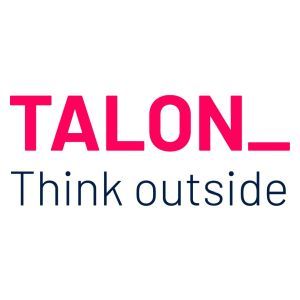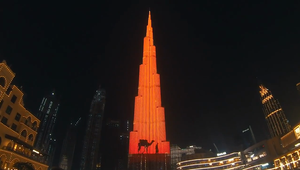
Originality in DOOH: Ric Albert on What Really Makes a Campaign Memorable

“If you can’t be first in a category, then setting up a new category you can be first in is the second most powerful positioning idea.”
These are the wise words of Al Ries and Jack Trout, two marketing strategists who gave the world a new way to think about making a brand memorable. In the Out of Home (OOH) industry, especially the digital (DOOH) side, we seldom see originality anymore. We are often presented with media-firsts, then seconds and then thirds of an original idea which by that point has already been way overdone.
However, we’ll always remember the first-time augmented reality was used or when the first interactive screen was used in DOOH, so how can we as an industry ensure that originality is at the forefront of our executions?
Talon Outdoor spoke to Ric Albert, creative director at Grand Visual, who in his career spanning over 14 years, has worked with some of the biggest brands to produce unique, original and memorable OOH campaigns.
Q> So, Ric, what’s your take on the current state of creativity in DOOH?
Ric> I believe that the potential for creativity in DOOH has never been stronger. More screens, more environments, more confidence with the medium and more opportunities for exposure – it's definitely an exciting time.
But with the combination of all these formats, the impending factor of programmatic OOH and the increase in multi-market campaigns that we are engaging with - the ever-increasing rollout requirements mean it's important to make sure that our medium stays fresh and exciting wherever we can.
This is why I want to focus on originality in DOOH; to create the memorable campaigns that people remember years later, and still crop up in those best practice /case study decks!
As a result, this originality has given us:
The first time that face-tracking was used intelligently within a creative idea
The first time Augmented Reality combined with DOOH in a slick social film
The moment when some dynamic flight data was used in a beautiful and magical way
Q> Where do we begin?
Ric> Well, it would be remiss of me not to start with Anamorphic/Forced Perspective 3D content. It has unquestionably been the latest big innovation and trend within DOOH and has captivated a whole new audience.
However, I think it’s no coincidence that the first attention-grabbing piece of content (d’strict’s The Wave – in Seoul) was created as a public piece of digital art rather than a commercial opportunity. It took quite some time for brands to commit. Being first is tough – these kinds of activations cost a lot and there is no guarantee on ROI. Newness is scary, but if you succeed, the rewards are great.
But when others follow, it becomes an example of diminishing returns – there are only so many objects popping out of a 3D screen that will amaze audiences before the novelty wears off and audiences look for something else.
Q> What are the benefits of being brave and trying something new with DOOH?
Ric> Fame, awards, worldwide publicity... the list goes on. There is definitely a correlation between risk and reward. The most high-profile or highly awarded campaigns are either doing something fresh and new or taking something established and finding a unique, original spin.
Coming up with the creative idea isn’t always the hardest part though – sometimes, persuading clients to commit can be a far greater challenge!
Q> So how do you get a client to go with the brave idea?
Ric> Every client is different, and I don’t have the answer here. I wish I did! I have a drawer full of rejected ideas that I wish we had undertaken. In my experience, inspiring them, getting them to be part of the creative process so that they have a feeling of ownership is a good start!
Ocean’s Digital Creative Competition over the years has been a brilliant way to get agencies and brands to get a little daring and find that special idea, with the safety net of the media buy included in the prize.
Q> Have you seen a difference in the last few years?
Ric> I think the biggest change has been our audience. We’re now in an era where DOOH is being used not only as an Out of Home channel, but also very much cutting through as a PR channel on social media. If you look at the anamorphic campaigns, they are primarily built for an online audience, as they only work from one specific perspective. The end deliverable becomes the video footage of it running on the screen. Which sparks the question, does it even need to be on the screen at all? Last year, Zara ran a successful anamorphic 3D campaign that wasn’t even real, but rather, some very cool motion tracking work. Most people didn’t know the difference.
But this is where Media Owner innovations, like Ocean’s DeepScreen, have found an original way to make sure DOOH retains its value. Productising Anamorphic, making it simple for clients to create and expanding the potential across multiple screens and locations is a great example of finding originality within an established creative technique.
The beauty of DOOH is the incredible canvases it presents. Whether it’s the famous screens of Piccadilly Circus and Times Square, giant skyscrapers becoming screens (such as the Burj Khalifa), or simply the ability to have your campaign launch on screens across the world, our playground is immense.
PlayStation 5’s 2020 Global launch demonstrated just how impressive OOH can be. They combined anamorphic, projections, digital and special build into one monumental launch video... sometimes originality can come from being the first to go that big!
Q> What do you think it takes to be original in DOOH?
Ric> I think it’s important to reiterate that originality can come in different forms – using a technique in a bold or smart new way, applying creative technology seamlessly to craft the perfect brand story, taking an established method and turning it on its head, or simply daring to be different and taking that path away from the norm. It’s the ‘I wish I’d thought of that’ moment.
A lot of campaigns are rehashes of another previous one (even in awards entries); concepts are tweaked to fit the brand. Which is fine, by the way! I don’t knock those, because they are tried and tested and easier to persuade a client to buy into. In fact, most of my decks will be predominantly these concepts, with that wildcard, bold one at the end, just in case.
Q> And finally, is there a campaign that stands out to you?
Ric> Maybe not the most obvious choice, but Hiscox Cyber Live is one of my favourites. The campaign creative was responsive to real-life cyber-attacks driven by a ‘honeypot server’. This used the potential of Dynamic DOOH in a totally unique way – finding a new data trigger to affect the artwork in a visceral and meaningful way and proving that dynamic can sometimes step outside of the standard practices.













